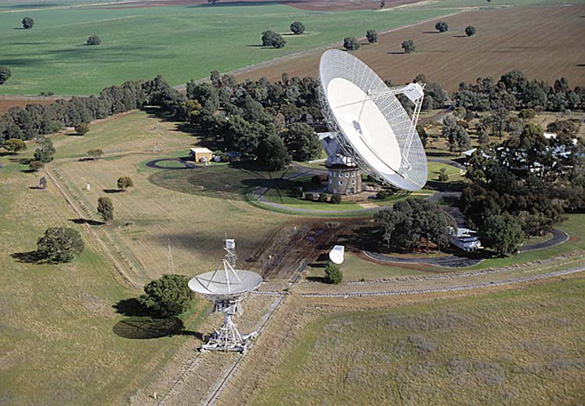
by: Alejandro Rojas
http://www.openminds.tv/aliens-not-ruled-out-as-possible-source-of-unidentified-radio-bursts-from-space/32956
Scientists analyzing radio bursts from space have discovered a strange pattern that suggests the signals may be of an artificial nature. Some scientists have been open to the idea that the radio signals are a possible extraterrestrial beacon, and this new data does not rule out that possibility.
In a paper posted on the Cornell University Library website, Michael Hippke of the Institute for Data Analysis in Neukirchen-Vluyn, Germany, and John Learned at the University of Hawaii in Manoa discovered that the dispersion measures of the signals are multiples of the number: 187.5.
 |
Table from the FRB paper showing information on their dispersion measures, who found them, when and at which telescope. (Credit: Michael Hippke, John Learned, and Wilfried Domainko) |
What does that mean? Well, from what I understand, scientist use the dispersion measure to help them figure out how far a signal came from. Higher frequencies travel faster than lower ones, so by measuring the difference in time the frequencies of the signal are received- the dispersion measure – they can get an idea of the distance traveled.
In this case, the dispersion measures seem to indicate an artificial origin. Hippke and Learned write: “We estimate the likelihood of a coincidence as 5:10,000.”
“If the pattern is real,” Learned told New Scientist, “it is very, very hard to explain.”
The signals in question are called fast radio bursts (FRBs), and have been recorded since 2001. Only one, in 2014, was detected real-time as it happened. The others were discovered by sifting through recorded data from telescopes. There have now been 11 FSBs recorded in total.
In a recent Huffington Post blog by Seth Shostak, senior astronomer for the Search for Extraterrestrial Intelligence (SETI) Institute, he explains that it was sifting through data from telescopes that lead to the discovery of the FRBs in 2007. Shostak says that Duncan Lorimer discovered the brief “flashes” of radio energy using a telescope in Australia.
According to former director of the SETI Institute Jill Tarter, “beacon from extraterrestrials” has always been considered one of the weird possibilities for the origins of the FRBs.
 |
| Duncan Lorimer, Professor of Physics and Astronomy, West Virginia University. (Credit: West Virginia University) |
In an FAQ on the signals posted on New Scientist, they point out that there are many possible natural origins of radio signals from space. However, they also note that the possible natural sources “don’t account for the fast radio bursts’ pattern according to any physics we know now.”
In the conclusion to their paper, Learned and Hippke write that if the natural sources are ruled out, “an artificial source (human or non-human) must be considered.”
Hippke tells the New Scientist, “there is something really interesting we need to understand. This will either be new physics, like a new kind of pulsar, or, in the end, if we can exclude everything else, an ET.”
“When you set out to search for something new,” he says, “you might find something unexpected.”
However, Shostak points out in his blog, there is one more thing we need to rule out before jumping on the ET band wagon. He writes, “In the case of the FRBs, one possible explanation — still not ruled out — is positively prosaic: They could be some type of man-made interference that only seems to be coming from deep space.”
The New Scientist article also speculates that there may still be terrestrial answers. They write, “It’s also possible that the telescopes are picking up evidence of human technology, like an unmapped spy satellite, masquerading as signals from deep space.”

The Parkes radio telescope in Australia. All but one of the 11 FRB signals was recorded using this telescope.
A recent update to the paper written by Hippke and Learned adds research that provides further evidence that the FRBs may be of terrestrial origin. The update was posted on March 30, and includes the addition of Wilfried Domainko of the Max Planck Institute for Nuclear Physics to the research team.
The update includes the discovery that the signals may arrive at times that align with UTC time. According to the paper, “the suggestive correlation with terrestrial time standards seems to nearly clinch the case for human association of these peculiar phenomena.”
So are the signals ET or human? It will take further research, and the discovery of more FRBs to verify. The new FRBs may or may not fit the dispersion measure patterns or align with UTC times. Perhaps some other feature to the FRBs will come to light giving scientists more information to go on.
Until more is discovered, we just don’t know.
The final sentence in the FRB research paper says, “In the end we only claim interesting features which further data will verify or refute.”
Meanwhile, Shostak warns, “It’s always tempting to invoke dramatic explanations for novel phenomena — after all, that makes them both more interesting and more important. But history suggests that caution is a good idea, and more likely to be justified in the end.”
No comments:
Post a Comment